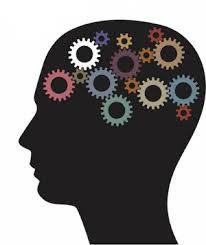 When designing your website you need to design for the end user, the human, the potential customer but don’t forget the search engines!
When designing your website you need to design for the end user, the human, the potential customer but don’t forget the search engines!
Small differences can make a very big impact to how it performs. For example, where your call-to-actions are placed or the layout of your content impacts how the user actually uses your website. Good planning here and leveraging the advice of good web designers can help mitigate problems and give better impressions to your potential customers.
A well designed website is more than just looking good, it needs to be functional and be the selling tool you need it to be. This need to be understood from the very beginning as changes down the line can prove costly and delay any new build. Sitting down with a web designer is hugely important to allow the designer get a feel of the website requirements and your business. They need to immerse themselves in your business and your customers.
User Structure
Making sure a website is not too complex is very important. There needs to be breathing space for the user to digest what is being shown to them while also immediately making conscious decisions to see if the information present is what they want.
A busy or chaotic web page will make the user feel they do not know where to start and will, more than likely immediately leave your website. Having it structured correctly will allow users to quickly find what they have been looking for.
People, for the most part read from left to right. As a designer or a client, you need to keep this in mind and strive towards a design that best reflects this, hence a websites logo is always placed on te top left of the page.
Placing sections such as the price and “Buy Now” button on the right allows users to track across the screen with their eyes as they would with a book. Here, it is important that the placing of this is visible and clear. Make these the focal point of your product page.
Try not to reinvent how websites are structured. People have become very familiar with this and trying to be too clever is to be avoided.
Search Engine Structure
Structure also has an impact as to how the search engines read the coding of a website. Today, there are hundreds of elements to the algorithms and all of these add up to your website scoring well on Search Engine Results Page (SERP) to languishing in the doldrums after page one.
First and foremost, you need to make the website easy for search engines to crawl. This involves using H Tags, well thought out hierarchical structures, well-defined URL structures amongst others.
Internal linking from one page on your website to another is a great way for you to help search engines find the information on your website and more importantly index it. Traditionally, if a Googlebot comes onto your website, they will not know exactly what is on your website in its entirety, you need to help it find it.
Sitemaps help considerably here as they outline not only to a user but also a Googlebot where all the pages on the website are.
Colour
We see colours all around us, from traffic lights to the colour of the sky there is simply no getting away from colours and how we respond to them is very different on websites. There are reasons why Amazon’s “Buy Now” button is orange while Facebook and Twitter primarily use blue.
Unfortunately there is no one colour that you can use in the right way across the board. You must identify your target market and use best colours which are reflective to that market. For example, if selling children’s toys, you could use vibrant colours whereas women in their 30’s will respond a completely different way.
Testing colours on a website is best to find out the ideal colour, most especially for the “Add to Cart” or “Buy Now” button. A good web designer here will help ensure that the colours compliment the overall design.
Here are some emotions which are traditionally associated with colours:
Red: Power, passion, danger, stop
Orange: Confidence, friendliness, cheerfulness
Green: Go, money, health, growth
Blue: Trust, peace, safety, masculinity
Black: Death, luxury, formality
Content
Before the internet became more organised and civil, web pages could have thousands of words filled with as many keywords as humanly possible. This was not only time consuming for the writer but also hugely inconvenient for the reader. Panda came along and changed everything.
Users come to a website to solve a problem and access the information they need to help them in their cause. They want to see it fast and you only have seconds to give it to them. A correct web design here is very important in aiding them in their quest.
Today, a web page needs to be edited and arranged in a way that while you’re providing quality content, you’re not slowly killing them with information overload. There needs to be a happy medium here. By doing so, you reduce the risk of losing a potential customer.
Your content needs to be logical, good quality and of the right size. The content needs to add value or enrich the live of your readers. Therefore, the right content is much more important than backlinks to your website.
If you'd like some advice or a quote on how we can make your website be the online tool you need it to be, why not get in touch!